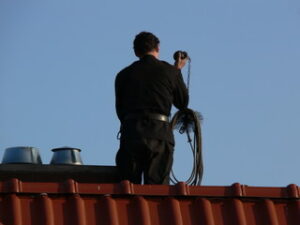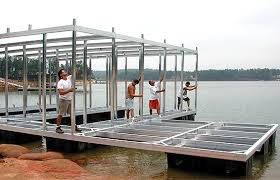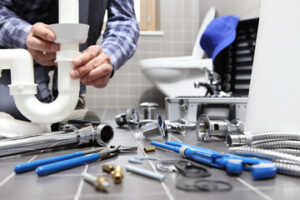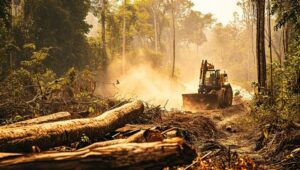MT Solar panels are built to withstand severe weather events, but micro-cracks and debris can impact energy production. Regular inspections can catch these problems and keep your system preforming as it should.

Track your energy output regularly using apps or monitors. Sudden drops can indicate an issue. Also, visually check your wires every few months to ensure they are secure and without signs of wear or damage.
Solar panels are engineered to be strong and durable, but they can still become damaged by environmental factors or accidents. When this happens, it’s important to take the necessary steps to repair them, as cracking can decrease energy production and lead to further damage if left unchecked.
Before you begin working on your solar panel, it’s essential to turn off the power source and make sure the area is clear of any electrical hazards. You should also wear insulated gloves and nonslip shoes, as well as a sturdy ladder if you’re working on rooftop panels. Safety is paramount when it comes to solar repair, so taking the time to prepare yourself reduces your risk of injury and ensures a smoother repair process.
When assessing the condition of your solar panels, it’s important to consider the size and location of any cracks. Small surface cracks that don’t penetrate the protective layer of the solar panel may not need immediate repair, but they should be monitored regularly to prevent further deterioration. Larger cracks and those that impact the performance of a solar panel require more extensive repair procedures.
Mechanical stress during transport and installation, and extreme environmental conditions are the main causes of cracked cells. These stresses cause the internal layers of a solar panel to deform. These cracks are often invisible to the naked eye and can only be spotted by using electroluminescence testing.
If a cracked cell isn’t repaired, it can cause a significant drop in the output of your solar panel, and this may require a replacement or a warranty claim. The cracks can disperse the sunlight incident on the solar cell, resulting in decreased efficiency and performance.
Depending on the extent of the crack, it’s sometimes possible to simply seal the affected area. For this, you’ll need a special solar panel sealant that’s compatible with your panel’s specifications. First, clean the damaged surface thoroughly and wipe away any dirt or debris. Then, carefully apply the sealant to the affected area, ensuring it’s applied evenly and thoroughly. Once the sealant has cured, it’s time to test your solar panel again.
Damaged Wiring
Wires are the conduits that carry electrical power from your solar panels to devices and appliances around your home. Severed wires can cut off the flow of electricity or cause devices to overheat. This problem often occurs due to heavy weather conditions, wear and tear, or wildlife. It’s important to address these issues as soon as they occur to ensure your solar panel system’s safety and performance.
If you notice a significant drop in your energy production, this may be an indicator that your wiring needs to be repaired. Other common indicators that your system is in need of repair include a sudden or erratic increase in circuit breaker trips or flickering lights. Regardless of the specific issue, regular maintenance and inspection can help identify problems before they become more severe.
Performing DIY repairs can save you the cost of professional services and help ensure your solar system’s longevity. However, it’s essential to prioritize safety during the repair process. Protocols like shutting down your solar system, using insulated tools, and ensuring stable footing on rooftops can reduce hazards and risks. It’s also crucial to recognize when a complex issue requires the help of an experienced professional.
The first step in repairing damaged wires is to locate the source of the problem and switch off the power. Then, use a voltage tester to double-check that no live current is present before handling the wires. Once the wires are clear of any electrical damage, remove the outer insulation and strip it back to expose bare copper. If the insulation has been completely stripped, you can wrap the exposed portion with a layer of heat-shrink tubing for added protection and security.
A burning smell within your home’s electrical system is a sure sign that the sheath covering your wires has begun to melt, exposing them to one another and posing serious fire and shock hazards. It’s important to take note of these signs and take immediate action to replace the faulty cable. To do so, follow the guide below to safely replace a wire without damaging its surrounding components.
Damaged Panels
Generally speaking, solar panels are designed to be durable. However, damage does occur occasionally. When damage occurs, it’s important to assess and repair the issue quickly to minimize performance losses and protect warranties.
Solar panel damage can be caused by natural events like hail or severe winds, and by less-than-ideal installation practices. In general, if your solar panel’s tempered glass has hairline cracks or chipping, this is an indicator that your system has lost some of its efficiency. It’s also important to look for signs of discoloration or rust, as these can indicate underlying issues like overheating and degradation.
The most common cause of solar panel damage is micro-scratches, which are usually caused by weather conditions (hail or debris from extreme winds). Often, these scratches aren’t immediately visible, but they can accelerate your solar panel’s degradation timeline and decrease energy production over time.
While you can try to repair these micro scratches, it’s often easier and more effective to start with a new panel. Today’s solar panels aren’t designed for repairability, so trying to fix them by yourself can be more dangerous than not replacing them altogether. Moreover, it’s worth noting that the cost of a new panel is likely to be cheaper than recurring repairs.
If you notice that your solar panels have a yellowish tint, it’s likely that they are experiencing PID (Power Induced Distortion). This is a problem that occurs when the internal wiring and fuses in your solar panel become overloaded. PID causes your panels to produce less energy, so it’s an important issue to address.
The best way to avoid this issue is to schedule a professional inspection and maintenance visit each year. During these appointments, a technician will check your solar panel’s wiring, inverter, and mounting structures for any damage or potential problems. These annual visits help ensure that your solar panel system works well for the duration of its 25-30-year lifespan.
Warranty Issues
Many solar system issues can be resolved by taking advantage of a manufacturer’s warranty. This guarantee provides homeowners with peace of mind that their solar energy systems will function properly for a certain period, even if unforeseen circumstances arise. However, it’s important to understand how warranties work so that you can navigate the process confidently and maximize the financial benefits of your investment.
The first step in addressing a warranty issue is to carefully review the terms of the product and performance warranties and determine whether the problem qualifies for coverage. It’s also wise to look for any exclusions or limitations that could impact your claim. Lastly, it’s essential to understand what the cost of repair or replacement will be so that you can plan accordingly.
Solar panel repairs can be expensive depending on the scope of the job and the type of equipment involved. Chipped or cracked glass layers can be similar in cost to repairing a windshield, while solar inverter repairs are typically the most expensive. Fortunately, solar maintenance services can significantly reduce the cost of maintaining your system and prevent many problems from occurring in the first place.
Upon discovering a problem, homeowners should contact their installer or the manufacturer listed in their warranty documents. They can confirm the issue qualifies for coverage and help them through the process. In some cases, an inspection may be required before the manufacturer will approve a repair or replacement. This may involve scheduling an appointment with a certified professional, submitting diagnostic reports, and/or third-party verification.
In addition to resolving system failures and making recommendations for preventing future problems, solar inspections can also be an excellent opportunity for system optimisation. This can improve energy production by adjusting the angle of your panels or clearing debris that might be blocking sunlight, helping your solar system to maximise its return on investment.
It’s vital to maintain thorough documentation of all maintenance activities, inspections, and repairs to protect your solar panel warranty. It’s also recommended to only hire licensed professionals for all services. Unauthorized modifications and repairs can void your warranty, leaving you vulnerable to unexpected costs.








